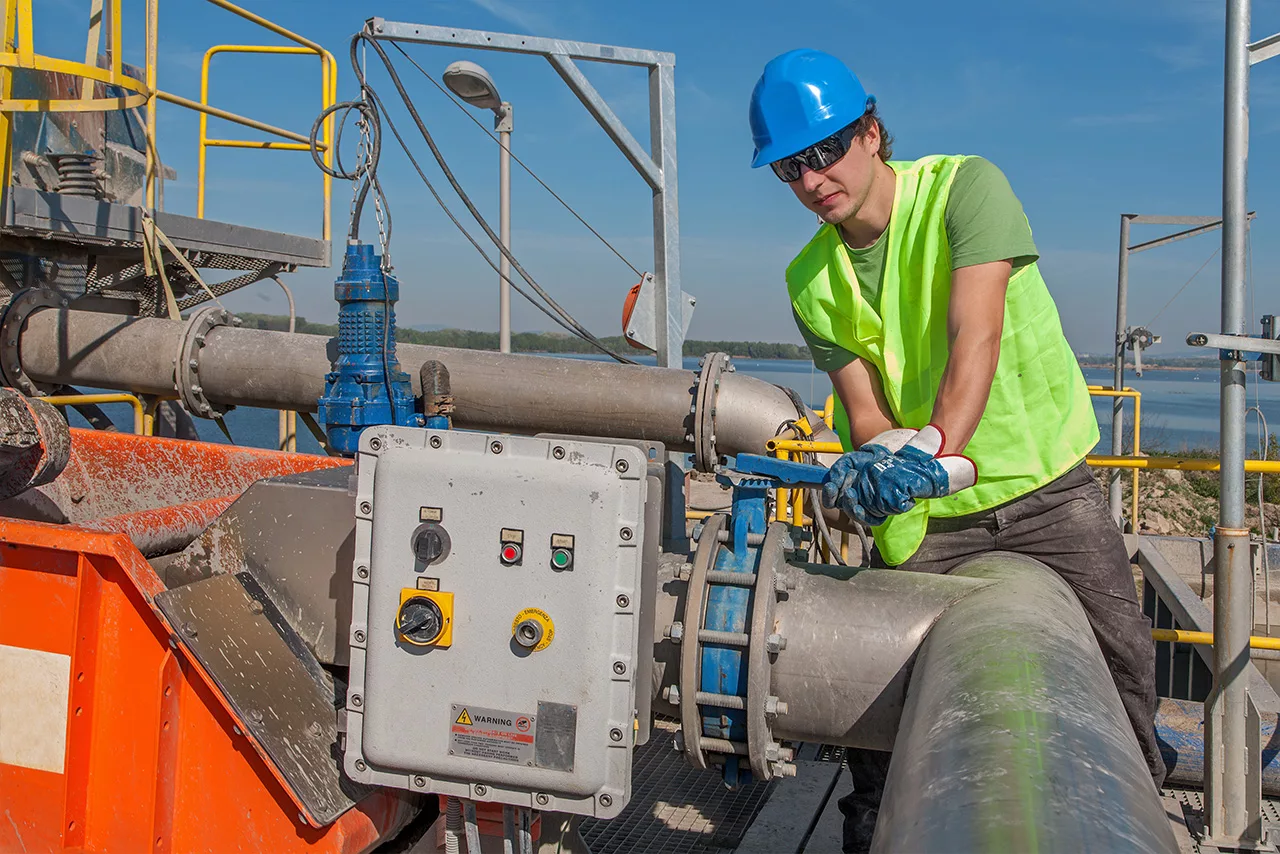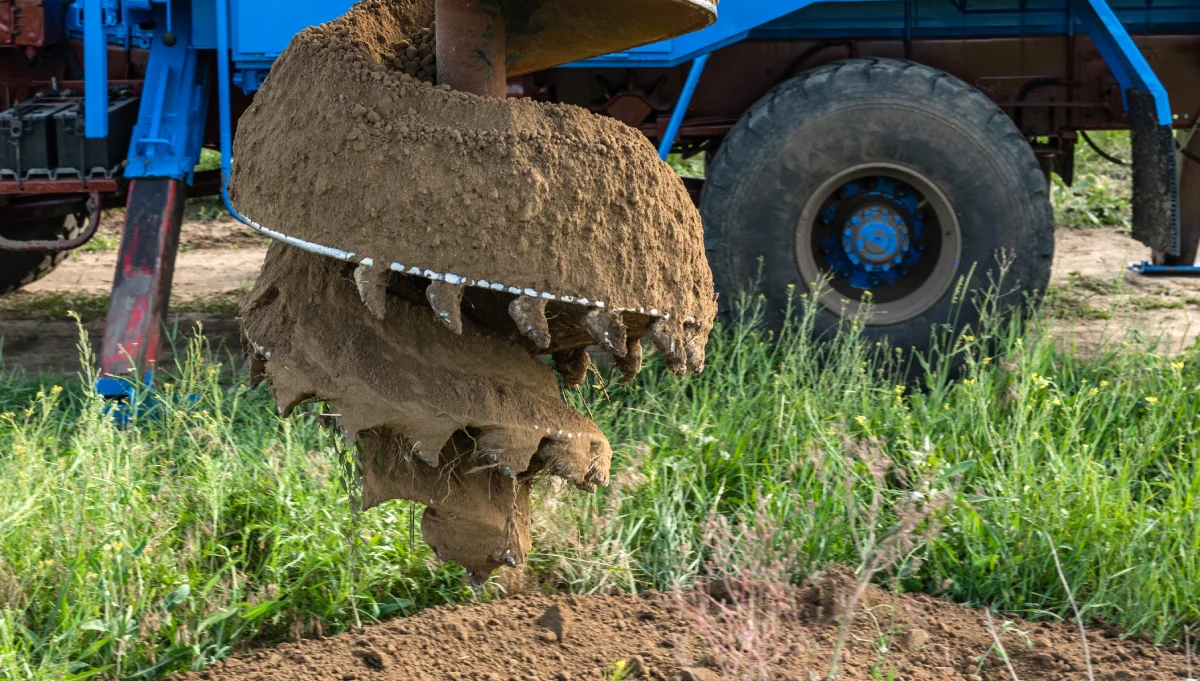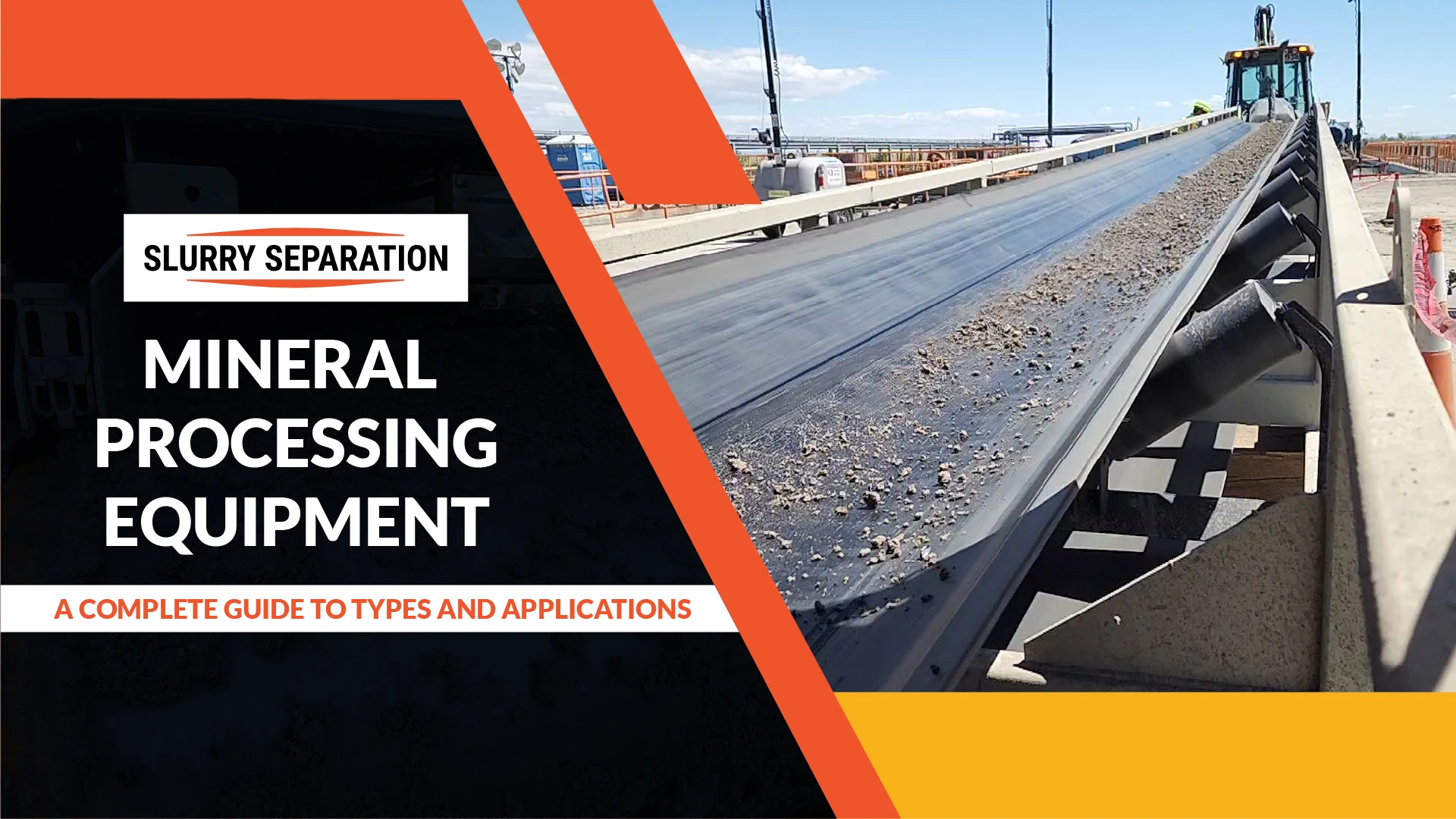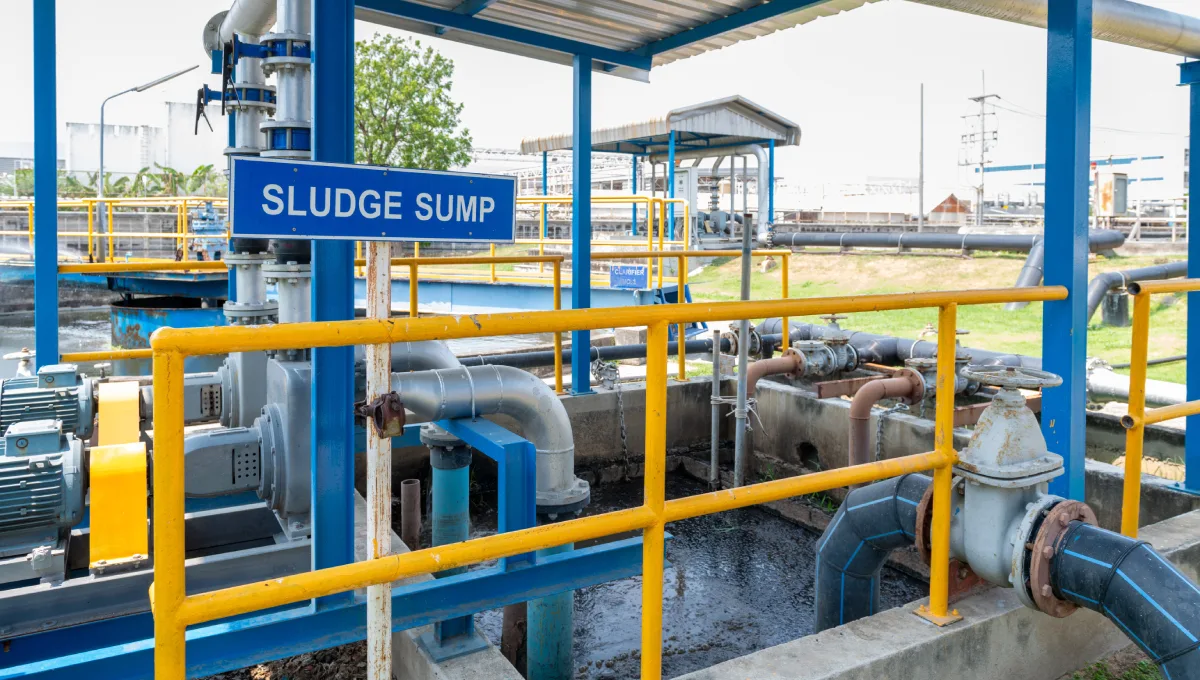Dredging operations are crucial for various industries, including construction, mining, and environmental remediation. However, managing the resultant slurry is a significant challenge. Here we go deep into the realm of slurry separation equipment, exploring the types, functionalities, benefits, case studies, selection tips, and future trends.
Types of Slurry Separators and Their Functionalities
Hydrocyclones
Utilizes centrifugal force to separate particles based on density. Efficient for separating fine particles from the slurry.
These units work like this: Picture a cone-shaped device with an inlet pipe at the top and two outlets at the bottom. The inlet pipe is where the muddy water enters, and the two outlets are for the clean water and separated solids.
As the muddy water enters the hydrocyclone, it starts swirling around inside. This swirling motion is like a mini-tornado created by the shape of the cone. Now, here’s the cool part. The swirling water creates a centrifugal force, pushing the heavier particles (the mud) towards the outer wall of the cone.
Because the heavier particles are pushed to the outer wall, they start moving downwards towards one of the outlets at the bottom of the cone. This outlet is for the separated solids, which are basically the mud that you wanted to get rid of.
Meanwhile, the cleaner water, with fewer solids in it, moves towards the center of the cone. It’s like the calm eye of the storm. This cleaner water exits through the other outlet at the bottom of the cone, ready for reuse or disposal, depending on the project requirements.
Hydrocyclones are highly adjustable, too. You can adjust them to separate different sizes of particles by changing the flow rate or the size of the cone. So, whether you’re dealing with fine silt or coarse sand, the hydrocyclone can adapt.
Decanter Centrifuges
Employ high-speed rotation to separate solids from liquids and are ideal for applications requiring high solids removal efficiency. In simple terms, a decanter centrifuge works by spinning a mixture of solids and liquids at high speed. The centrifugal force pushes the heavier solids to the outside while the lighter liquids stay towards the center. A conveyor screw then helps separate and collect the solids from the liquids, giving you two separate streams. In essence, it’s uses spinning force to separate solids from liquids.
Filter Presses
Applies pressure to force slurry through filter cloths, separating solids from liquids. This machine is suitable for dewatering high-solid-content slurries. In simple terms, a filter press works by applying pressure to a slurry mixture, squeezing out the liquid through special filter cloths while trapping the solids. This process can be repeated until the slurry separation process is complete.
Sedimentation Tanks
Allow solids to settle to the bottom, while clarified water is collected from the top and are commonly used in wastewater treatment plants.
Think of sedimentation tanks as giant settling ponds. They’re large tanks where slurry is allowed to sit quietly for a while. During this time, gravity does its job, causing the heavier solids to sink to the bottom while the lighter liquids stay on top.
The process starts when slurry is pumped into the sedimentation tank from a dredging operation or another source. Once the slurry is in the tank, it’s left undisturbed for a period of time. This could be hours or even days, depending on the specific characteristics of the slurry and the size of the tank. As the slurry sits in the tank, gravity pulls the heavier solids downwards. These solids gradually settle at the bottom of the tank, forming a layer of sediment.
Meanwhile, the lighter liquids stay on top of the settled solids. This liquid becomes clearer as more and more solids settle out, though it might still contain some fine particles. Once the settling process is complete, there are typically two outlets in the tank: one near the top for the clarified liquid to overflow, and one near the bottom for the concentrated solids to underflow.
The clarified liquid flows out of the tank and can be collected for reuse or further processing. The concentrated solids, now settled at the bottom of the tank, can be removed periodically and disposed of or treated as necessary.
It’s important to monitor the sedimentation tank regularly to ensure they are working effectively. This might involve adjusting the flow rate of the slurry, removing accumulated solids, or even adding chemicals to aid in the settling process.
Benefits of Investing in Advanced Slurry Separation Technology
1. Enhanced Efficiency
Advanced separators offer higher throughput and better particle separation, leading to increased operational efficiency.
2. Cost Savings
Reduced disposal costs due to dewatered solids, which can be reused or disposed of more economically.
Additionally, there are lower water consumption and treatment costs as clarified water can be recycled.
3. Environmental Compliance
Minimize environmental impact by reducing the discharge of contaminated water into natural water bodies.
Meet stringent regulatory requirements with efficient sludge management.
Tips for Selecting the Right Slurry Separator for Specific Applications
1. Define Requirements
Determine the desired throughput, particle size distribution, and solid-liquid separation efficiency.
2. Consider Site Conditions
Assess factors such as slurry composition, space availability, and power supply.
3. Evaluate Maintenance Requirements
Opt for equipment with easy maintenance and robust construction like the S-Force 1000 to minimize downtime.
Future Trends and Innovations in Slurry Separation Equipment
1. Automation and Integration
Integration of sensors and automation technologies for real-time monitoring and control of separation processes.
2. Advanced Materials
Development of wear-resistant and corrosion-resistant materials to enhance equipment longevity.
3. Energy Efficiency
Adoption of energy-efficient designs and renewable energy sources to reduce operational costs and environmental impact.
Recent advances in slurry separation equipment have revolutionized dredging operations, offering enhanced efficiency, cost savings, and environmental compliance. By understanding the types, how these units work, benefits, and selection criteria of slurry separators, industries can optimize their operations and prepare for future innovations in this critical field.




